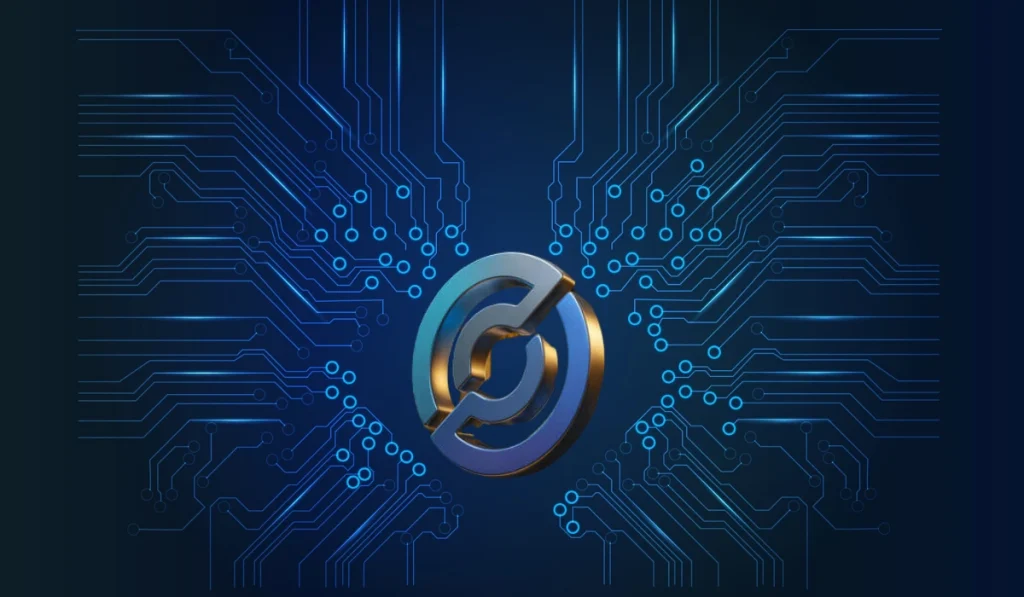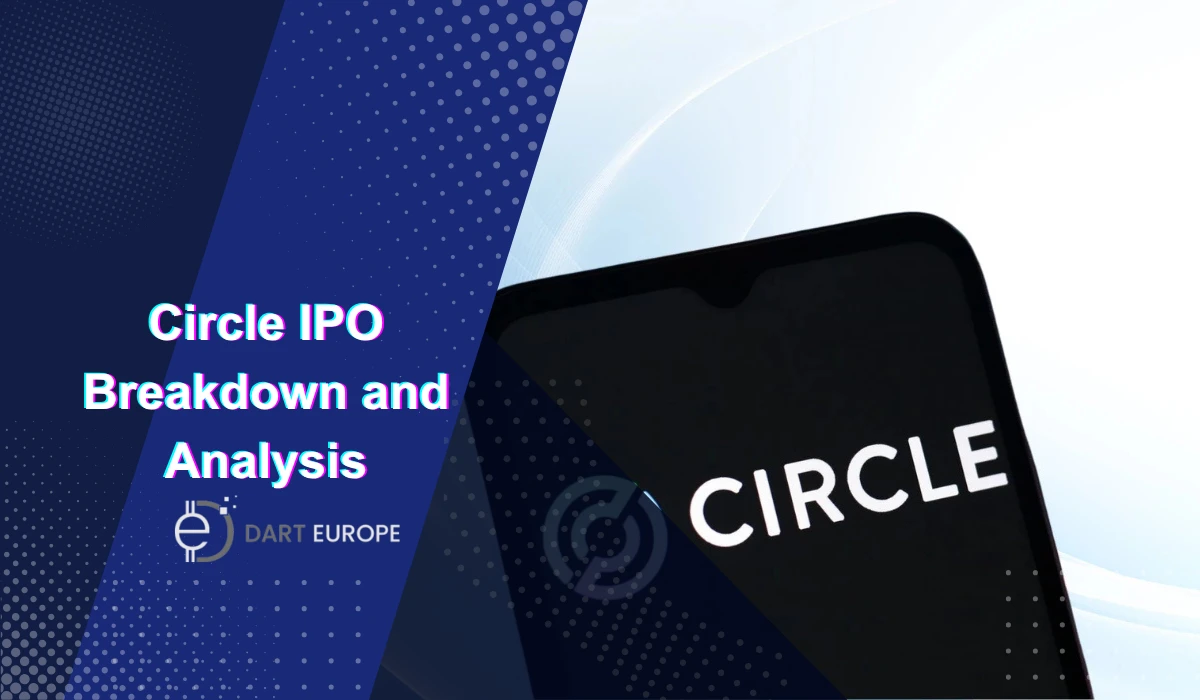Shares of US stablecoin issuer Circle climbed 168% following its initial public offering (IPO) debut on the New York Stock Exchange (NYSE) on Thursday, June 5, 2025. This performance comes amid a growing market appetite for regulated stablecoins and some significant tailwinds for the crypto industry.
Circle’s stock, which launched at $31 per share under the ticker symbol CRCL, surged 235% in the first hours of negotiation to $69 before closing at $82 at the end of the day. At one point, CRCL hit a peak of $103.75 per share. The company managed to raise nearly $1.1 billion from the 34 million share IPO that was available to investors, way beyond the $624 million initial target.
Circle Internet Group set its IPO price above both the $27-$28 range that was estimated earlier in the week and the initial $24-$26 range from the previous week. These figures were based on the company’s $6.8 billion valuation before CRCL began trading.
By the end of its first trading day, CRCL hit a trading volume of approximately 46 million shares, well above the number of publicly available shares.
The company behind the dollar-pegged USDC stablecoin has been working on issuing its Class A common stock for years. In April, Circle filed a Form S-1 registration statement with the US Securities and Exchange Commission (SEC), expecting to launch CRCL the same month, only to be delayed after citing macroeconomic uncertainty caused by the ongoing trade wars.
Prior to its launch, BlackRock, the world’s largest asset manager, revealed that it was eyeing a 10% stake in the Circle IPO. Cathie Wood’s investment management firm Ark Invest has also shown interest in the offering, reportedly planning to buy $150 million worth of shares.
The listing is the largest by a crypto firm since Coinbase Global’s COIN in 2021. The company had previously attempted to go public through a $9 billion blank-check deal with Barclays-backed Concord Acquisition Corp. in 2022, but the plan was ultimately dropped. At the time, co-founder and CEO Jeremy Allaire said that becoming a public company was a part of Circle’s “core strategy to enhance trust and transparency.”
Circle: History and Current Status
Circle Internet Group is a blockchain-focused financial services and payments company founded in 2013 by Jeremy Allaire and Sean Neville. During its initial years, it offered a consumer-facing peer-to-peer payment and cryptocurrency wallet and exchange app called Circle Pay, only to later shift its focus to commercial blockchain and crypto applications.
Backed by the banking giant Goldman Sachs, Circle is headquartered in New York City and operates globally from locations such as San Francisco, Dublin, London, and Hong Kong. In 2015, it became the first company to secure New York’s notorious crypto license, the BitLicense.
The company is best known for the USD Coin (USDC), a stablecoin introduced in 2018 that is designed to maintain price parity with the dollar and is backed by US dollars or assets of equal value. USDC quickly rose to become the second-largest stablecoin, only behind Tether’s USDT.
As of May, USDC has a market capitalization of $60.9 billion, representing 24.6% of the stablecoin market. According to the recent Form S-1 statement, over 99% of Circle’s 2024 revenue of $1.67 billion came from its stablecoin reserves, signifying the importance of the digital currency to its operations. The company also generates part of its income by holding yield-bearing US Treasury notes.
What Do Critics Have to Say About the Circle IPO?
The excitement surrounding Circle’s Wall Street debut was so pronounced that the NYSE was forced to halt trading of CRCL multiple times. However, not everyone seems thrilled about the company’s initial public offering.

In a now-deleted X post, Jeff Dorman, chief investment officer of crypto asset manager Arca, criticized Circle for only granting the company an allocation of $135,000 in the IPO. According to him, Arca placed an order to invest $10 million in CRCL, only to receive shares worth 1.35% of its order.
Dorman’s accused Circle of giving “fat allocations” to TradeFi mutual funds and hedge funds that will probably never use its products and services. He said that Arca was one of the first entities to back the IPO plans and make an offer.
Arca is threatening to close all its accounts with Circle and vowed to discourage other companies from partnering with the stablecoin giant.
Circle launched the IPO on May 27 and announced an initial target of 24 million shares, with the company issuing 9.6 million shares of Class A Common Stock and existing early investors providing the remaining 14.4 million shares.
On June 2, the company increased its IPO target to 32 million shares, with the goal of raising $892 million. Circle raised the target once again on June 4, boosting the IPO to 34 million shares at $1.50 billion.
In April, Paolo Ardoino, CEO of stablecoin giant Tether, claimed that Circle was not a profitable company and had not been making any money, since “forever.” At the time, Circle had decided to postpone its IPO, which he alleged could be because investors were not impressed by the firm’s financials and disclosures.
El Salvador-based Tether is the issuer of USDT, currently the world’s largest stablecoin, boasting a market capitalization of $153 billion. This is more than double that of Circle’s USDC, which has a circulating value of $61 billion.
Ardoino called Circle’s decision to embrace Wall Street and focus on institutional adoption over users disastrous.
How is Circle Different from Tether?
Circle, the chief rival to Tether, is more willing to comply with stringent financial regulations, an area where the stablecoin market leader may not. While USDT has been delisted in jurisdictions like the European Union, where regulators have imposed strict compliance for stablecoin issuers, USDC is thriving due to being fully compliant and audited.
Circle is already prepared for the upcoming United States framework for stablecoin issuance. Meanwhile, Tether has hinted at creating a new token that will satisfy those requirements, but is focusing on emerging markets with its flagship USDT token.
In March 2025, Circle became the first stablecoin issuer to receive regulatory approval in Japan. The company has launched USDC on the SBI VC Trade crypto exchange, allowing Japanese crypto investors to transact in the dollar stablecoin.
Tether is also not interested in pursuing an IPO. In a recent X post, Ardoino said that there is no need for the company to go public.
What are the Risks of Investing in CRCL?
If you are interested in investing in Circle’s CRCL stock, there are certain risks that you need to be aware of. Historically, stocks that explode on the first day often experience a cooldown period as their momentum starts to fade.
Another case investors should consider is how the company reacts to the Federal Reserve’s actions. Since Circle holds US Treasuries, if the US central banks decide to cut interest rates, it could negatively affect revenue from the assets. To counteract this, the stablecoin issuer will need to diversify its income streams over time.
Furthermore, USDC and USDT aren’t the only stablecoins in the mix. The market is becoming more competitive every day. Late last year, payments giant PayPal and crypto firm Ripple Labs launched their PYUSD and RLUSD stablecoins, and US banks are considering launching their own dollar-backed digital currencies to compete against established players. Rising competition in the field may derail the stock’s future growth.
Read More: Security Tokens Vs Utility Tokens In Crypto: Legal & Functional Difference
Is CRCL a Good Stock to Buy?
The GENIUS Act is progressing well in the US Senate and could soon become law, establishing a robust regulatory framework for stablecoins. This could accelerate the adoption of dollar-backed cryptocurrencies across the board.
JPMorgan analysts have estimated that the market size for stablecoins could grow from $500 billion to $750 billion by 2027. With CRCL shares pacing through on its first day of trading on the NYSE, investors can count on Circle to dominate the market as USDC expands its global footprint.

